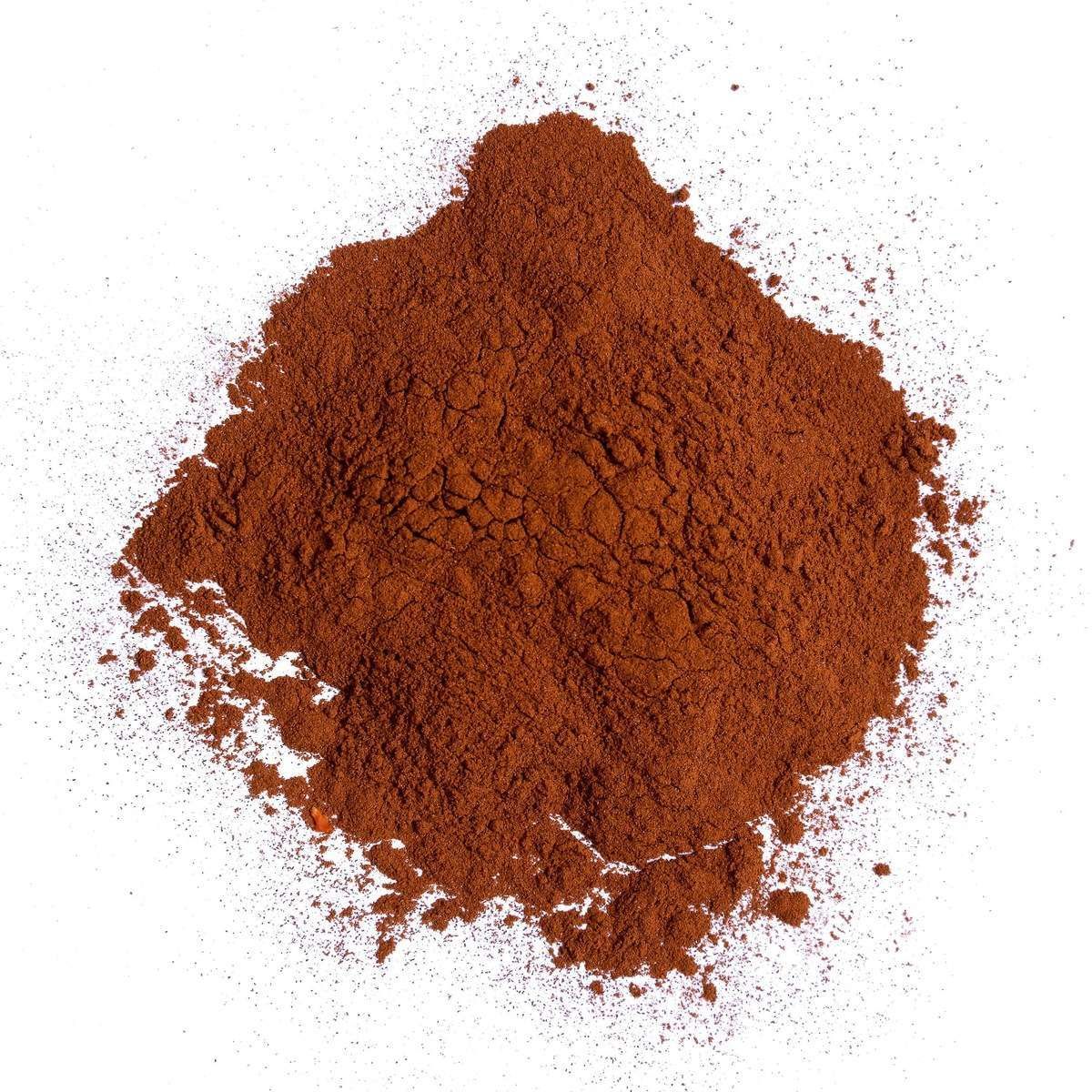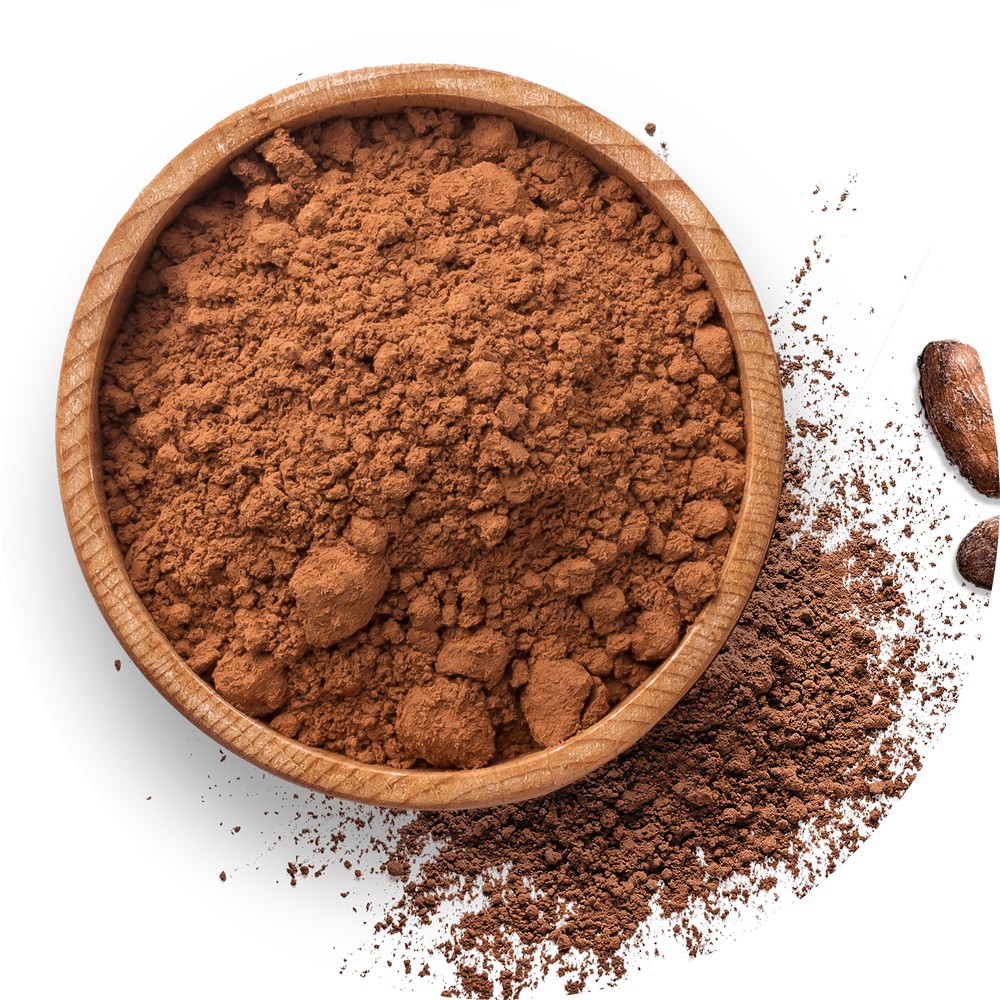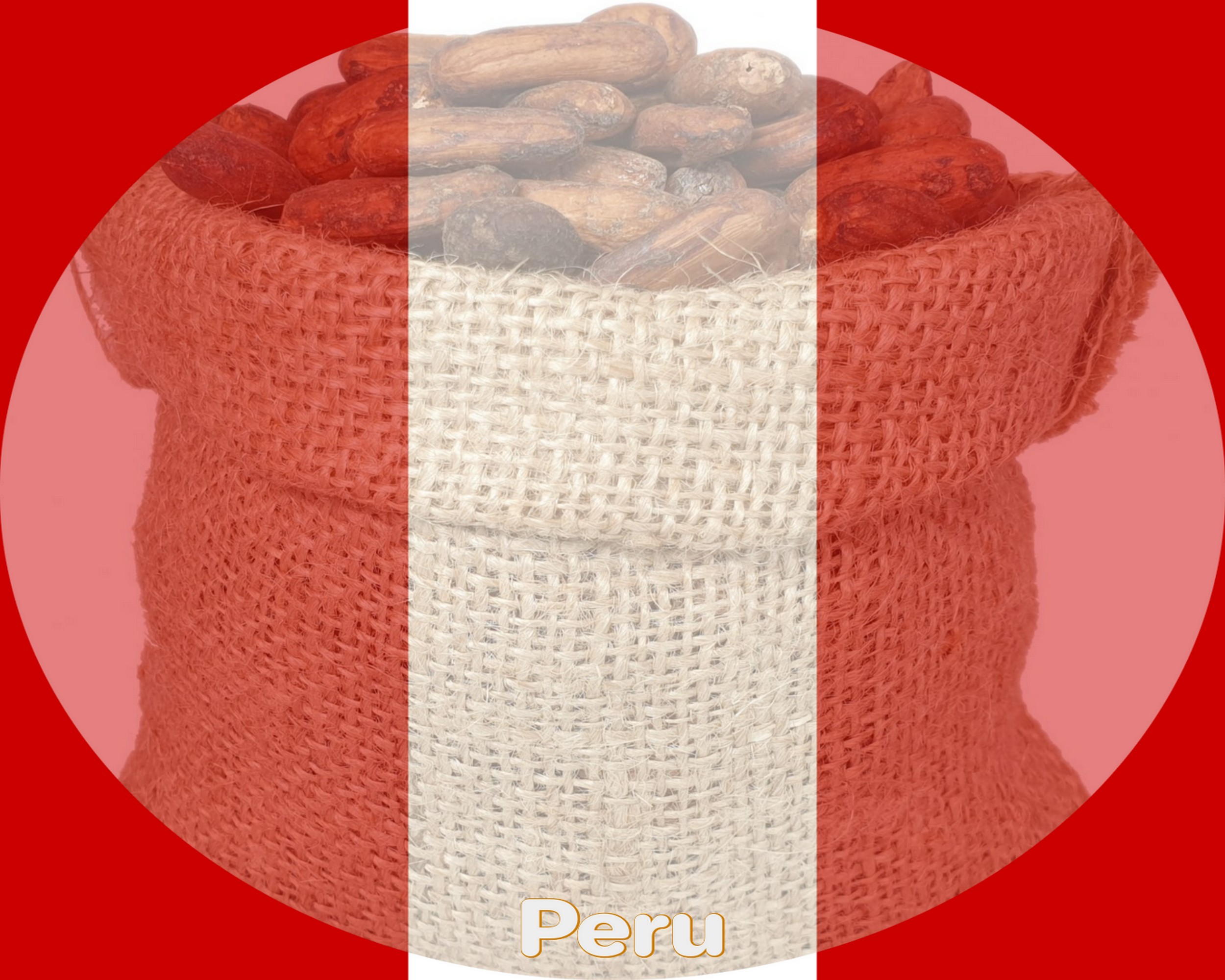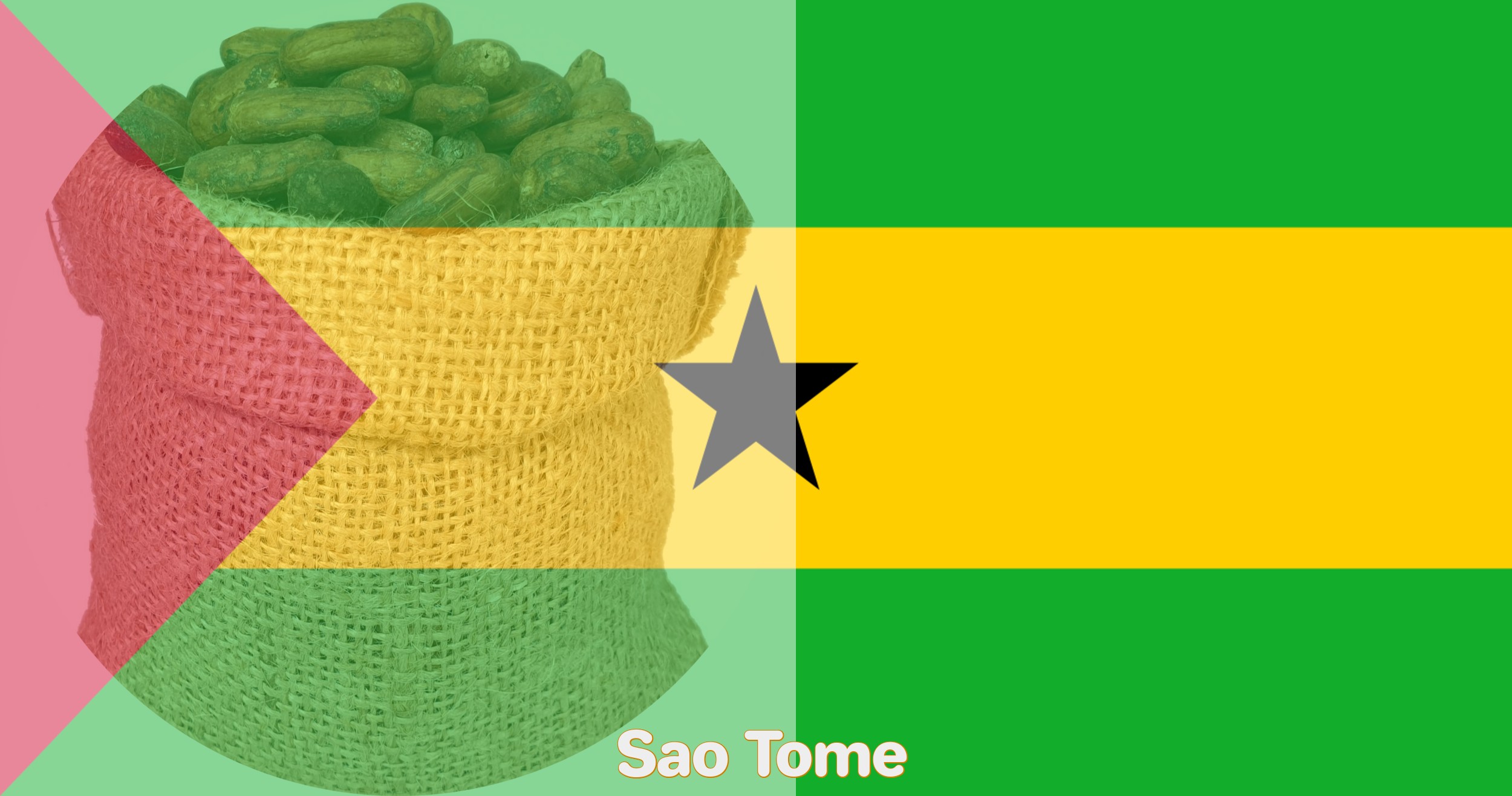Chocolate is made from seeds or beans in the pod-like fruit of the Theobroma cacao tree.
While the terms are often used interchangeably, there’s actually a difference between cocoa and cacao.
Manufacturers of raw (unroasted) or less processed cacao products prefer cacao rather than cocoa, which may imply that they are more natural products.
At harvest, cacao beans are fermented to develop flavor and texture. Dried beans are roasted unless a raw product is desired. Roasting more fully develops the chocolate flavor and gives them some sweetness. The beans are then crushed and separated from their outer hulls, resulting in broken cacao pieces called nibs. Nibs are ground, producing a non-alcoholic liquor.
Cacao powder is made from fermented beans that have not been roasted. These beans are processed at low temperatures and then milled into a powder. Cacao powder is bitter in taste and higher in nutritional content.
Cocoa powder on the other hand is made from beans that are both fermented and roasted, and then processed at a much higher temperature. The result is a less bitter, slightly darker powder that has lost some of its nutritional value.
Both cacao and cocoa products are good source of iron, fiber, magnesium, and are rich in compounds including antioxidant flavanols.
- Côte d’Ivoire (Ivory Coast)
- Ecuador
- Ghana
- Dominican Republic
- Nigeria
- Papua New Guinea
- Peru
- Haiti
- Venezuela
- Togo
In 2019 the top importers of Cocoa Beans were Netherlands ($2.2B), Germany ($991M), Malaysia ($895M), United States ($869M), and Belgium ($729M).
However, see new trends in 2022, based on the HS code 1801 (Cocoa beans; whole or broken, raw or roasted):
Netherlands: $1.9B
United States: $1.3B
Malaysia: $1.2B
Germany: $759.5M
Indonesia: $616.9M
France: $479.8M
Italy: $341.0M
Turkiye: $340.0M
Canada: $329.9M
Belgium: $277.3M
Europe is the world’s largest destination for cocoa beans, both for bulk and specialty cocoa (56%). North America and Latin America together account for about 18% of global cocoa beans imports, and Asia for 26%.
The global industrial chocolate market is expected to grow at an average annual rate of 4.3%, reaching an estimated market value of $66 billion in 2026.
What do these industries need to produce your favorite chocolate? Cocoa beans, obviously, then nibs, liquor, paste, powder and butter.
Germany is the world’s largest exporter of chocolate, with a global market share in value of 16%, followed by Belgium (11%), Italy (7.6%), Poland (7.2%) and the Netherlands (6.5%).
TOP WORLD EXPORTER |
TOP WORLD IMPORTER |
|---|---|
| IVORY COAST: $3.84B | NETHERLANDS: $2.2B |
About 15,500 metric tons of certified organic cocoa beans are sourced from the following countries:
Madagascar, Tanzania, Uganda, Belize, Bolivia, Brazil, Costa Rica, Dominican Republic, El Salvador, Mexico, Nicaragua, Panama, Peru, Venezuela, Fiji, India, Sri Lanka, Vanuatu, Ghana.
Organic cocoa commands a higher price than conventional cocoa, usually ranging from $100.00 to $300.00 per metric ton.
Eight countries represent 90% of world supply:
Côte d’Ivoire or Ivory Coast, Ghana Indonesia, Nigeria, Cameroon, Brazil, Ecuador, Malaysia.
The biggest producers of cocoa are Ivory Coast and Ghana which together account for more than 60% of the world’s output.
Cocoa is traded on New York Mercantile Exchange (NYMEX) and the Intercontinental Exchange (ICE) in London. The size of each cocoa contract on the NYMEX is 10 metric tons.
- Delivered At Place (DAP) – Incoterm
- Your warehouse, a port or airport
Our free quotes will always include shipping costs to your warehouse, a port or airport.
SHOP NOW
Natural cocoa powder has a light brown color and a pH level of 5.1 to 5.4. The processed (alkalized) cocoa powder is darker in color, ranging from brownish red to nearly black, with a pH from 6.8 to 8.1.
The alkalization process reduces bitterness and improves solubility, which is important for beverage product applications.
Cocoa powder is cocoa liquor, which has been pressed to remove most of its fat, and then pulverized to a powder. High fat cocoa powders typically contain 22%-24% cacao fat. Low-fat cocoa powders typically contain 10% or less cacao fat.
Cocoa powder that has not been “Dutch” processed or treated with chemical alkalis is called natural cocoa powder.





